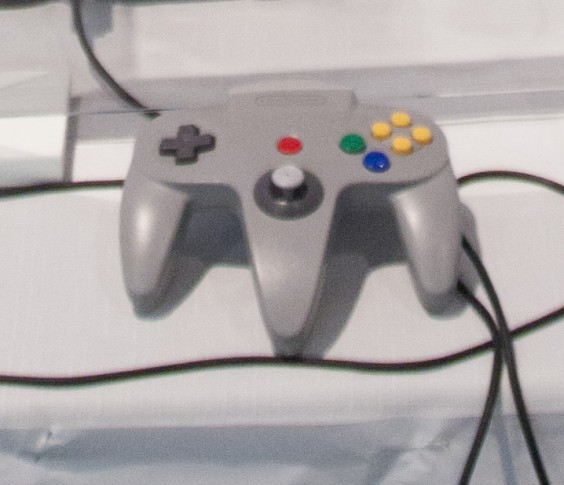Evolution of the Console Controller – Nintendo 64 Controller (1996)
The N64 controller was Nintendo’s first controller to feature an analog stick. Nintendo took a pioneering role in popularizing analog stick technology with the N64’s hit Super Mario 64. The N64 controller was designed in part for the needs of Super Mario 64, while the game itself was built to show off all the capabilities of the new controller, illustrating the synergy of game and controller development.
With the N64 controller, the games industry began to move from primarily D-Pad to analog controls. With analog controls included with every N64, game makers could default to games requiring greater precision and subtlety than a D-pad can deliver. This was an advantage as games transitioned from 2-D to 3-D. The controller’s distinctive M shape was novel and sometimes confusing compared to previous controller designs and remains contentious today. Any two of the three handgrips on the controller can be held, depending on which controls a game requires.
Accessories for the N64 controller, including memory cards and the Rumble Pak (a haptic feedback device that causes the controller to shake), were released. Parts of Mario Party require rotating the analog stick as fast as possible, causing blisters and burns on the palms of players’ hands, so Nintendo offered players free gloves. Later Mario Party titles avoid stick rotation minigames, and the original Mario Party has never been re-released.
Up to Analog Era – Back to Super Mario 64 – Forward to Sega Saturn 3D
On loan from Scott Kornahrens

